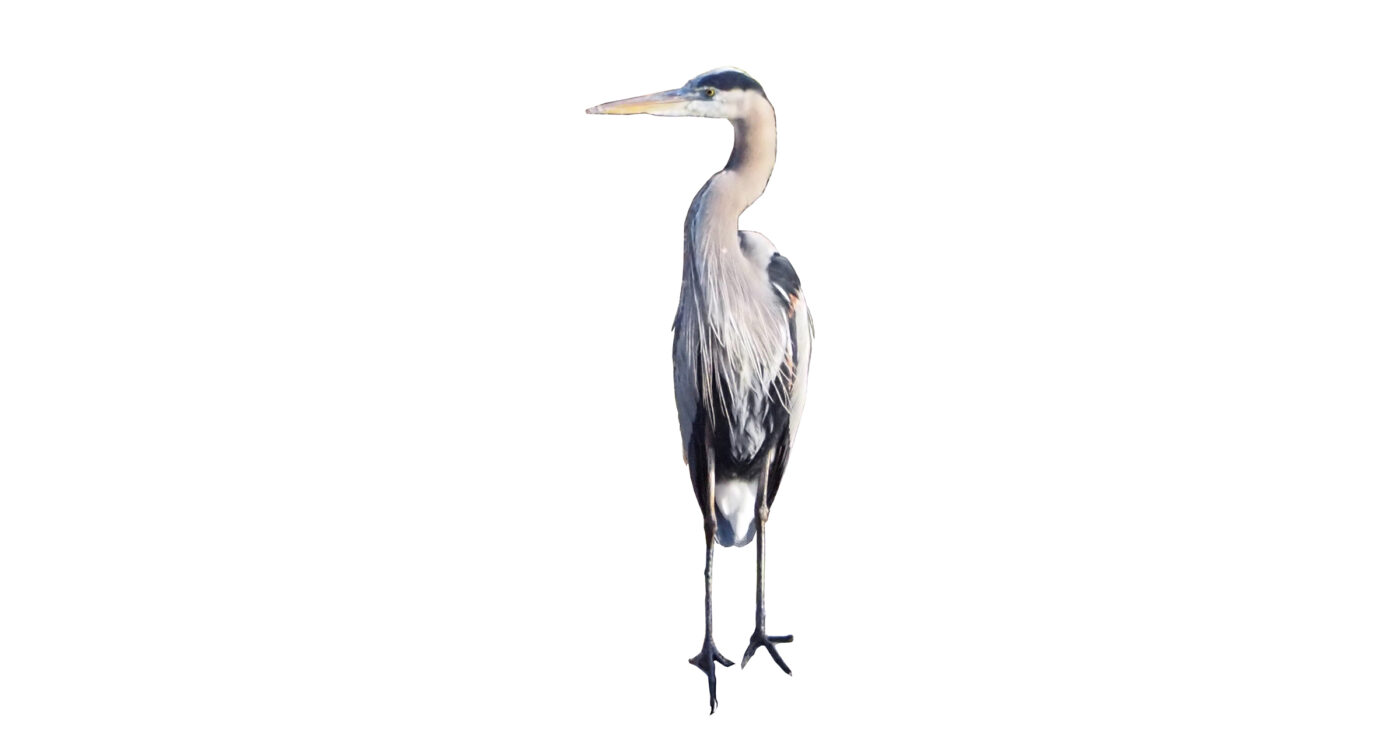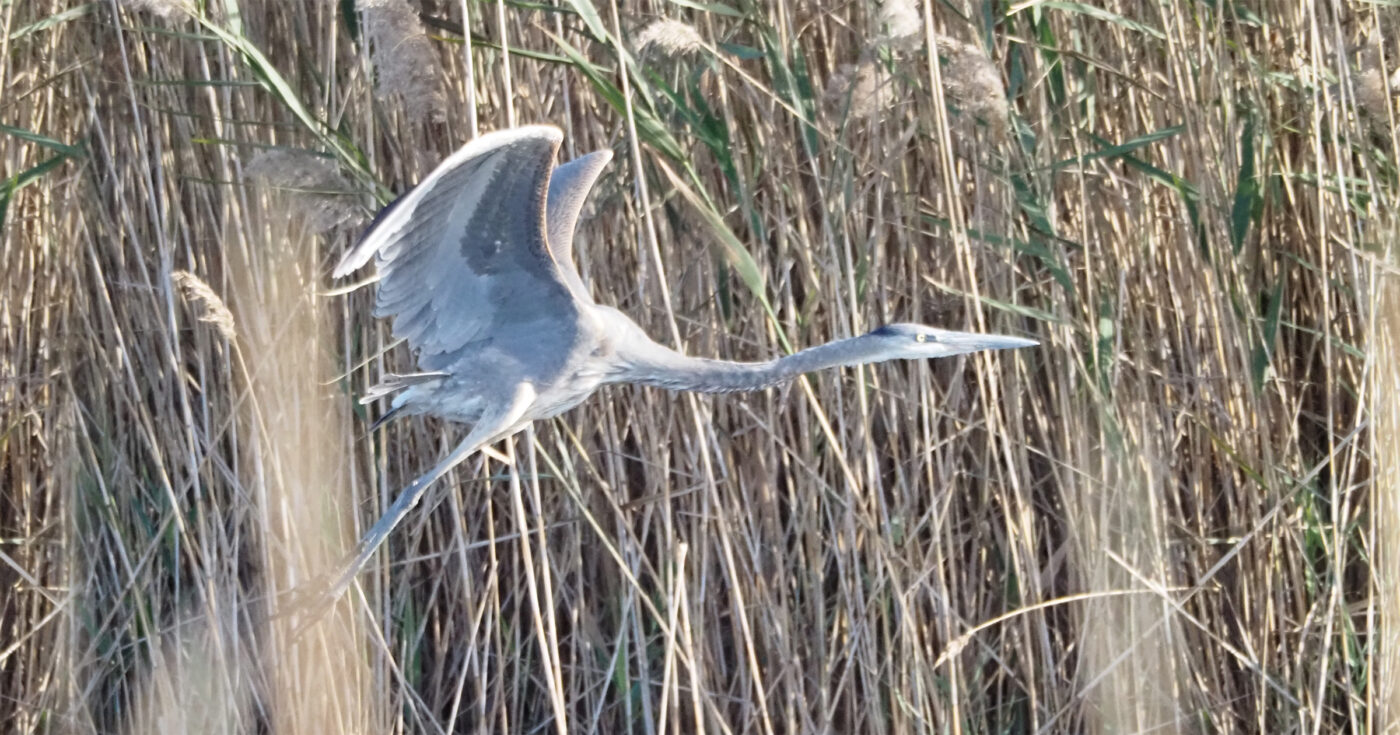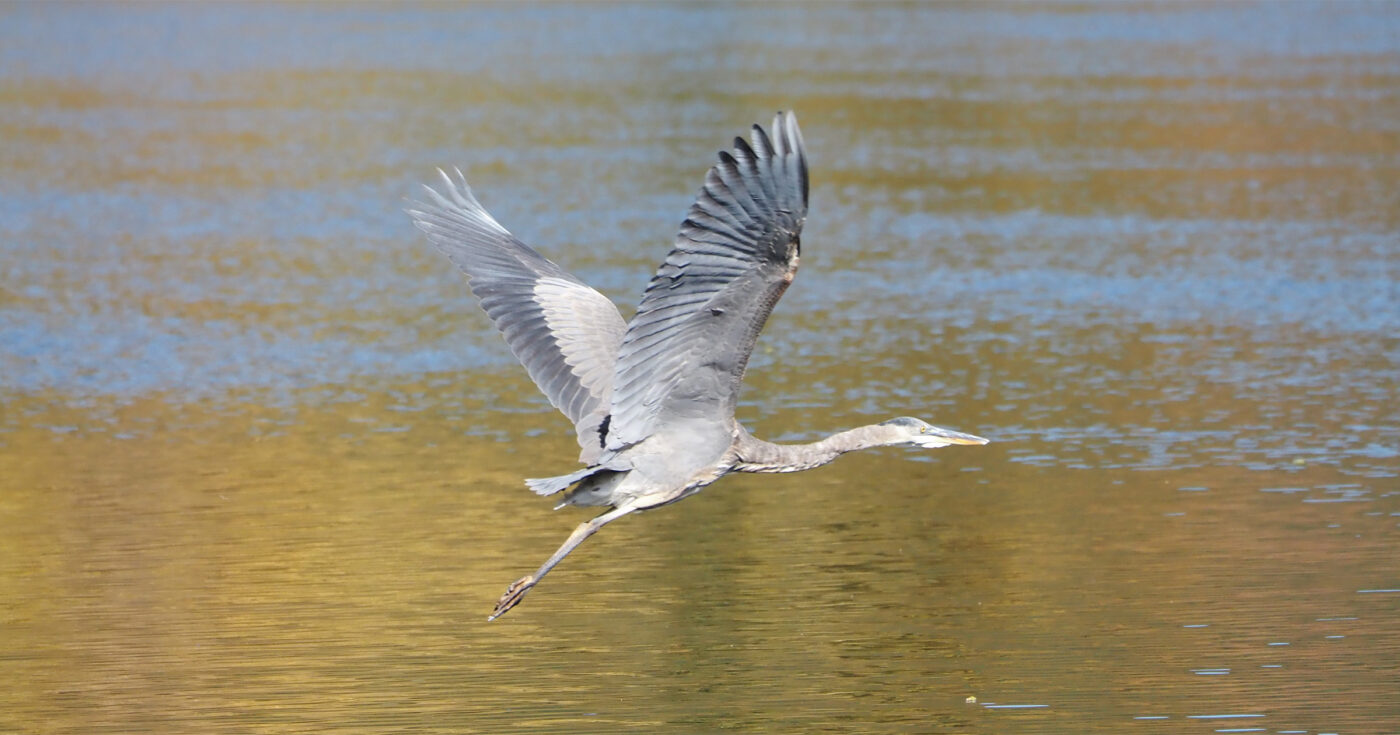Great Blue
By Eesa Lynn
If you have ever spent any time near the water in the United States, you’ve likely seen a Great Blue Heron Ardea herodias. The largest heron in North America, only slightly smaller than its sub-species the Great white heron found in Southern Florida and the Gulf of Mexico; the highly adaptable Great Blue heron can be seen all over North America wading in just about any body of water from coastal wetlands and marshes to back yard ponds, lakes, and even desert rivers.

Standing up to 5 feet tall, they are easily recognized by their blue-grey plumage which falls shaggy over their tall body. These shaggy feathers are in a constant state of growth and continuous fraying. This fraying creates a powder that actually keeps the birds clean and free from fish grime and oils. They have a distinctive black crown stripe over their eyes that extends into a feather tassel off the back of their white heads. An elongated neck of special vertebrae that can recess back into their shoulders can also quickly expand to full length allowing them to strike prey with their thick dagger-like beak at lightning speed.

Great blue herons can fly up to 29 miles per hour with a wingspan of up to 6.5 ft. and stand up to 5ft tall. They have a varied diet consisting of mostly fish which they catch while wading in the shallows but also enjoy small rodents, sea birds, salamanders, frogs, and even turtles. Their excellent night vision enables them to hunt after dark.

The nests of Great Blue Herons can be found alone or in colonies called rookeries. Most are found in trees from 20 to 60 feet above the ground or water, but sometimes on land in areas where predators are not an issue. As part of their annual courtship, nest sites are chosen by males who will bring sticks and nesting materials to the captivated female who completes the build. When her housekeeping is complete, the female heron will lay 3-5 pale blue eggs which are incubated by both her and the male for approximately 30 days. Once hatched, the chicks are fed by both parents and will fledge in 2 to 3 months.
As there is no current threat to the species, the IUCN lists it as a species of least concern.


